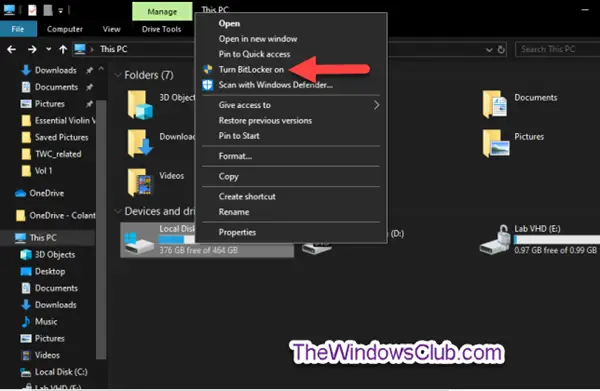

(Note that BitLocker isn't available on Windows 10 Home edition.)


If device encryption isn't available on your device, you might be able to turn on standard BitLocker encryption instead. Want to learn more and find out if your device supports device encryption? See Device encryption in Windows.Įncryption helps protect the data on your device so it can only be accessed by people who have authorization. Select Turn on BitLocker and then follow the instructions. It isn't available on Windows 11 Home edition. Note: You'll only see this option if BitLocker is available for your device. Or, select Start > Settings > Privacy & security > Device encryption > BitLocker drive encryption. In the search box on the taskbar, type Manage BitLocker and then select it from the list of results. For more info, see Create a local or administrator account in Windows. Sign in to your Windows device with an administrator account (you may have to sign out and back in to switch accounts). If Device encryption is turned off, turn it On. You may be able to use standard BitLocker encryption instead. If Device encryption doesn't appear, it isn't available. Select Start > Settings > Privacy & security > Device encryption. Sign in to Windows with an administrator account (you may have to sign out and back in to switch accounts). Encryption helps protect the data on your device so it can only be accessed by people who have authorization.


 0 kommentar(er)
0 kommentar(er)
